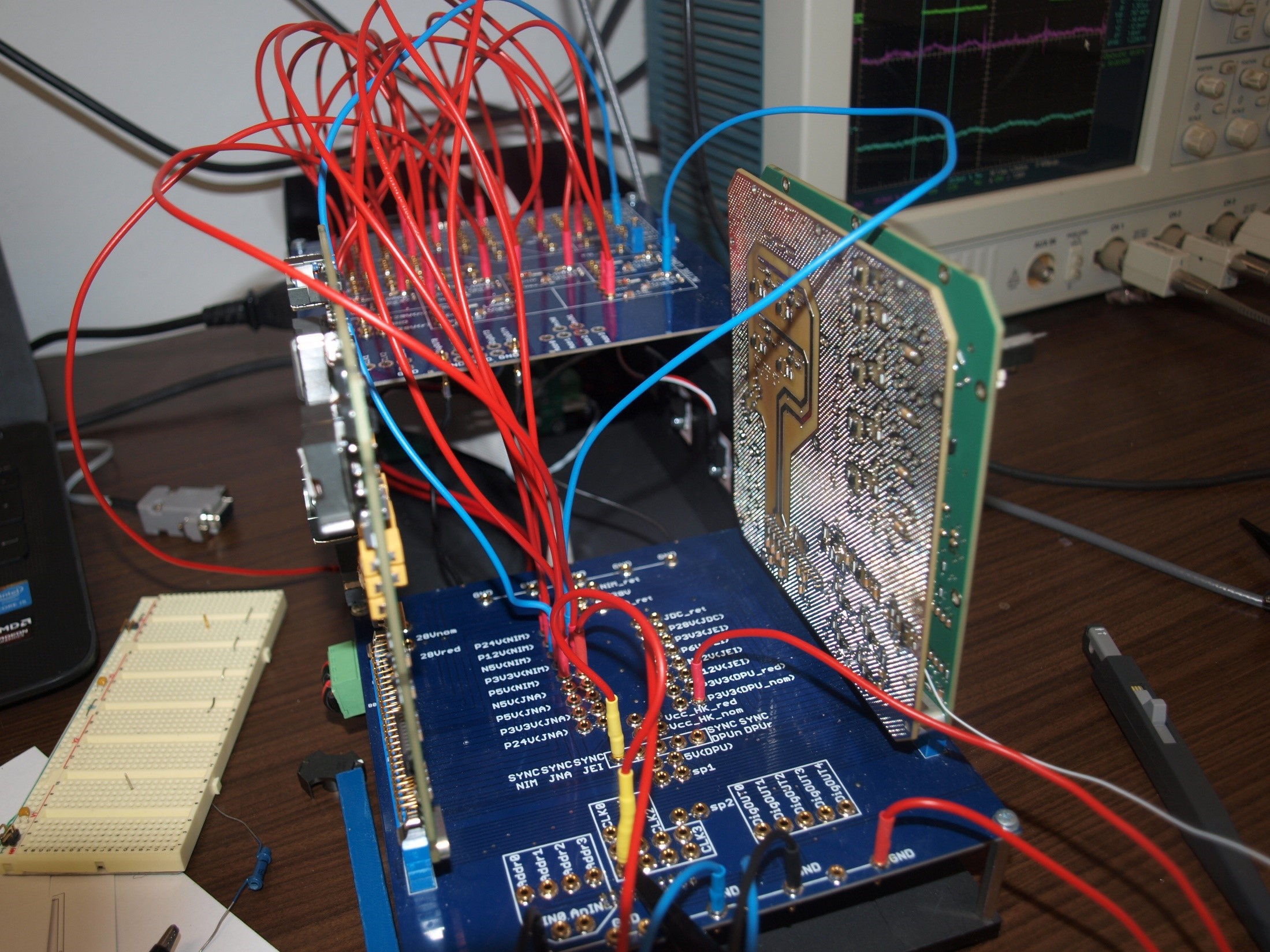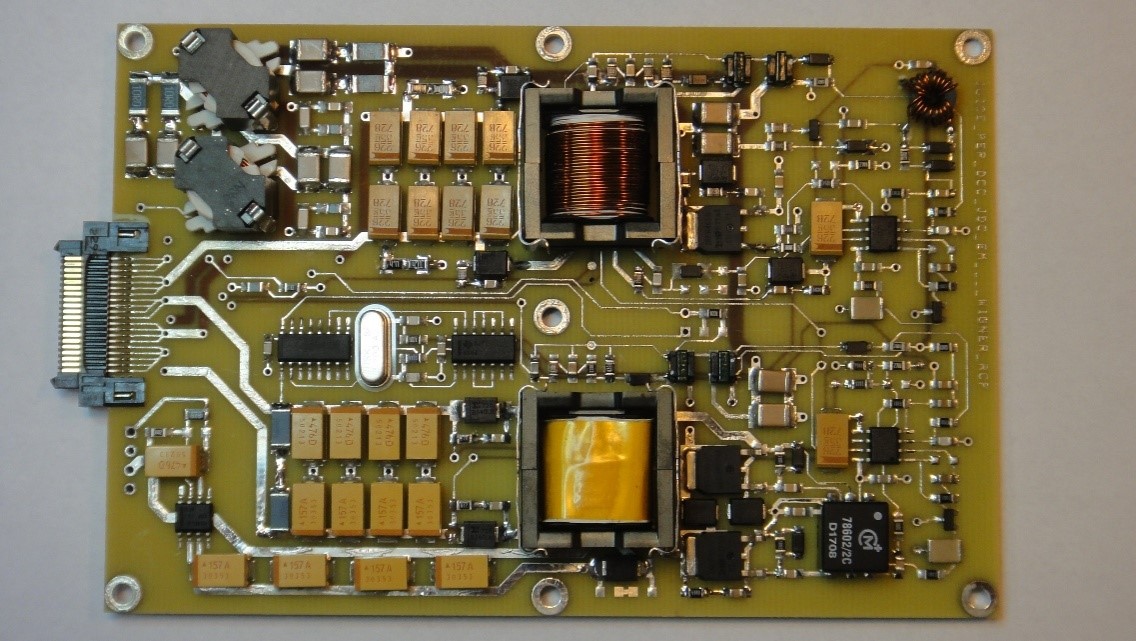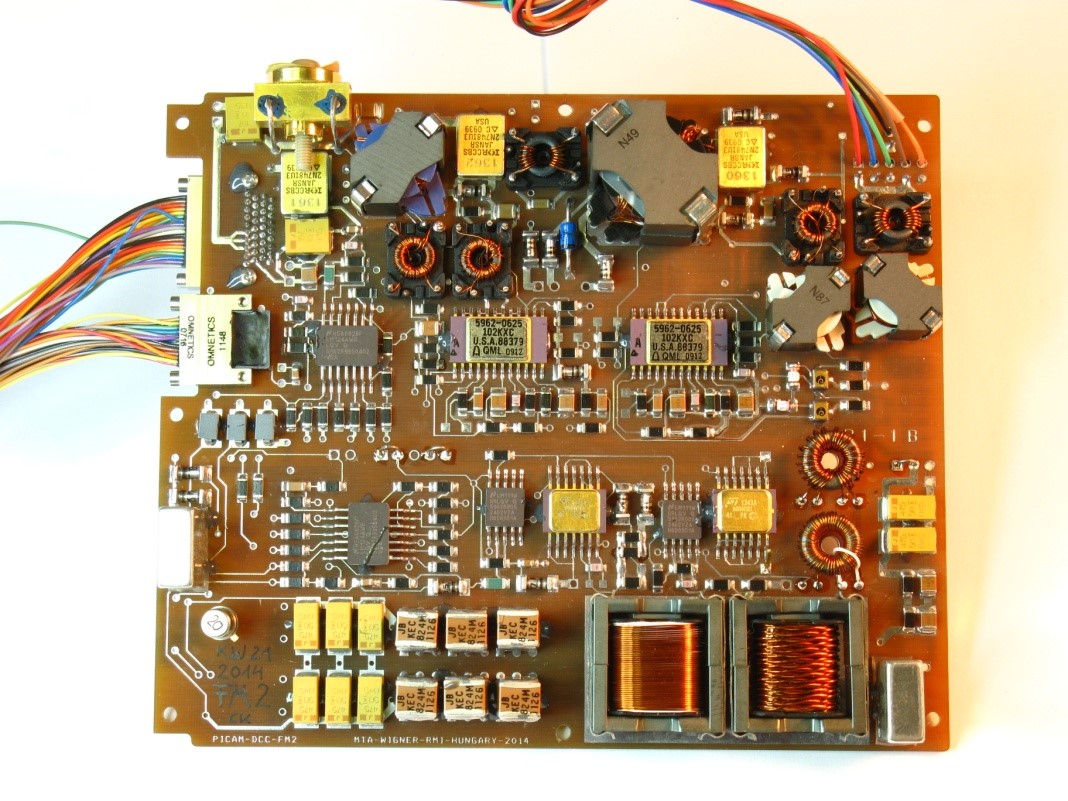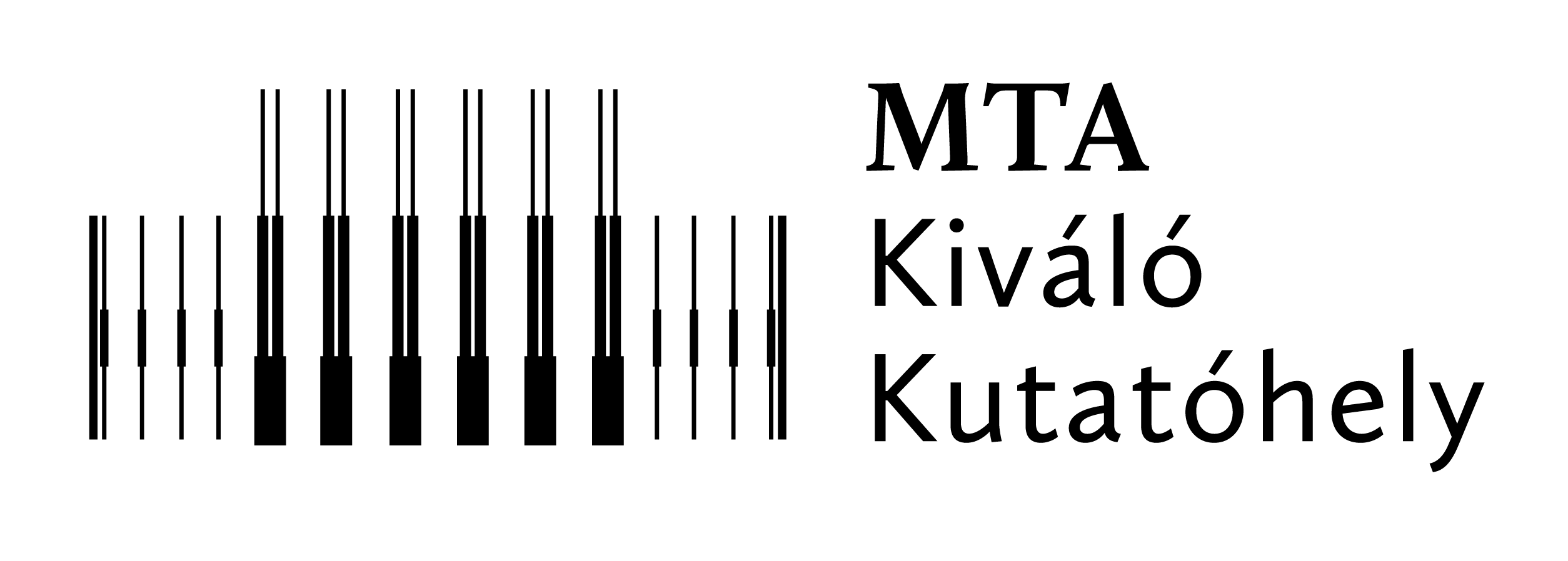2018
Description of the yearly scientific work.
We are participating in the ESA Juice project, which will arrive at Jupiter in 2030, eight years after its start in 2022. It will take measurements for two years around Jupiter. We develop high-reliability power supply units, DCC (direct current converter) for this program. The goal of the DCC is to ensure power for redundant DPU and 4 sensors of PEP experiment. After several meetings and discussions our preliminary plans to realize the job was accepted by PEP team. Figure 1shows the EM1 model (engineering model). Its goal was to make a working model for integration of EM version of PEP instrument. The EM1 after detailed tests worked correctly. In 2018 we delivered EM1 model for integration ongoing tests in Kiruna. Figure 2 shows separate DCC for a sensor called JDC developed by our team.

Figure 1. The EM1 model of DCC is under testing.

Figure 2. shows DCC for JDC sensor.
BepiColombo launched on Ariane-5 launcher from the Kourou Space Center on October 20 at 3:45 AM. The target of the spacecraft is Mercury. Two separate units, the European MPO (Mercury Planetary Orbiter) and the Japanese Mio (also known as Mercury Magnetospheric Orbiter, MMO), will be on track in 2025 around the Inner Planet of the Solar System. We participated in the development of the PICAM (Planetary Ion CAMera) ion-mass spectrometer in this project. The Picam acts as a camera for charged particles to study the chain of surface ionization processes. Our team's engineers have developed the PICAM low voltage power supply and the BepiColombo space probe simulation environment with the involvement of SGF.

Figure 3. The engineering model of Picam power supply unit.



